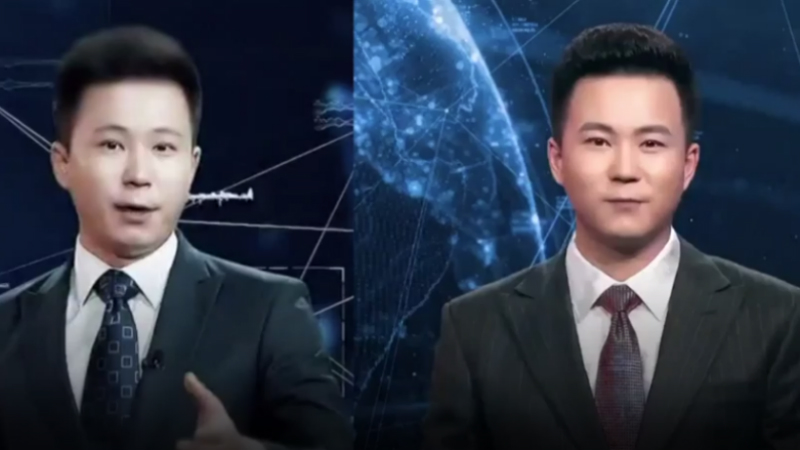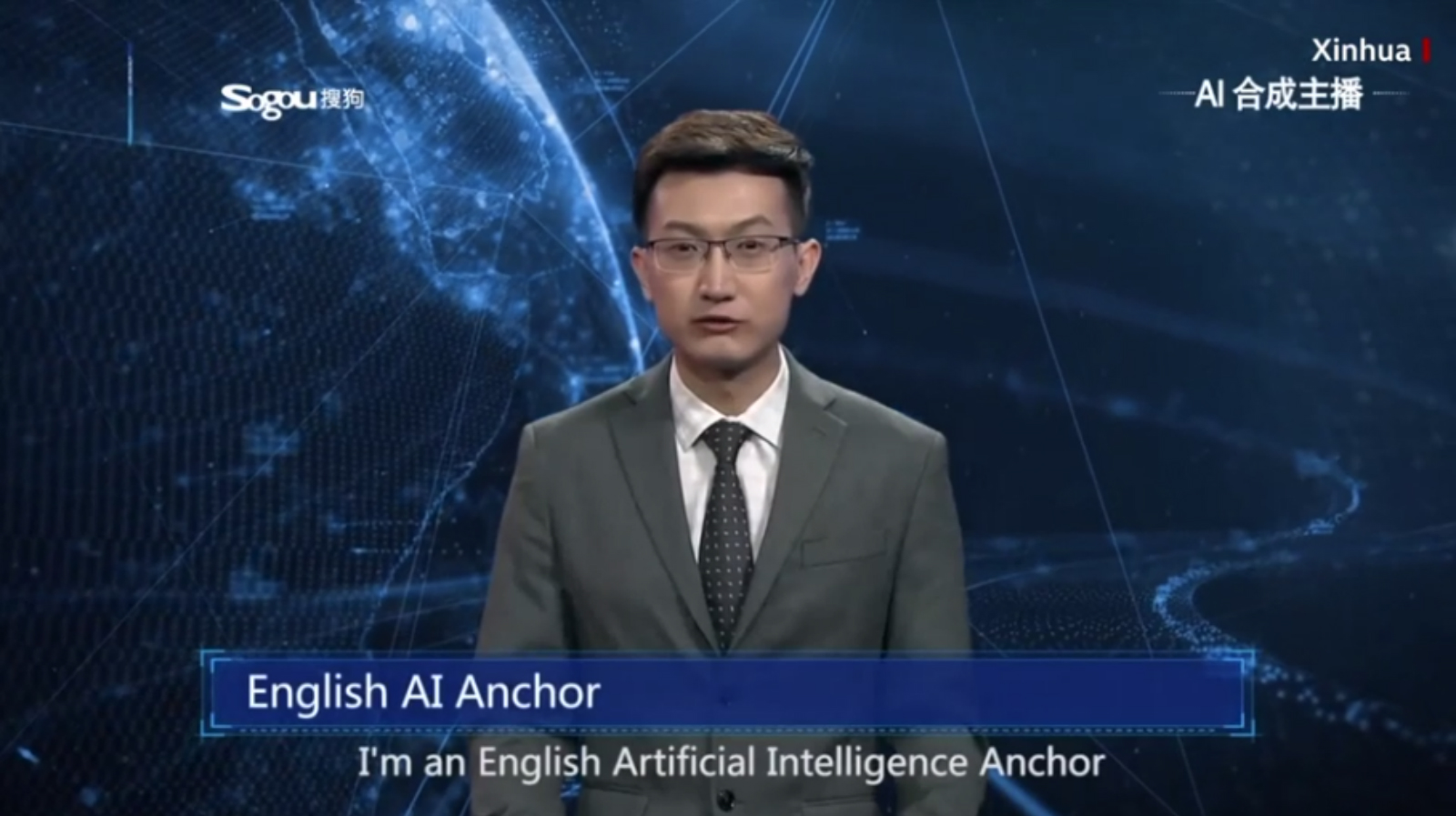“Hello, everyone. I’m an English artificial intelligence anchor. This is my very first day in Xinhua news agency.” Those are the introductory words of one of two A.I. clones presented the World Internet Conference taking place in Wuzhen, China, BBC News reported.
The virtual newsreaders are a collaboration between Xinhua News, China’s state news agency and Sogou, a Beijing-based browser and search engine. The virtual news anchors’ voices, lip movements, and facial expressions are based on human news presenters who work for Xinhua.
The English-speaking news anchor identifies the human source of his expressions. “My voice and appearance are modeled on Zhang, Zhao, a real anchor with Xinhua.”
Chinese-speaking virtual news reporter introduced via video at the World Internet Conference appeared adjacent to his human counterpart. While the video clips are short, the difference between human and A.I. clone are readily apparent, even with a relatively staid, unanimated human presenter.
According to the news agency, the A.I.-enabled virtual presenters, “can read texts as naturally as a professional news anchor.” BBC reports a Xinhua spokesperson said that using virtual newsreaders available 24 hours a day on its website and social media channels reduce news production costs compared to employing humans.
The clone underscores the 24/7 aspect of virtual employees in an introductory video, “I will work tirelessly to keep you informed as texts will be typed into my system uninterrupted.”
BBC News conferred with experts in computer science and artificial intelligence and robotics for reactions to the virtual news presenters.
Michael Wooldridge is a professor of computer science at the University of Oxford whose fields of special interest include artificial intelligence and multi-agent systems. Wooldridge told the BBC that the presenter’s struggles to look natural were in the “uncanny valley,” a reference to human-like robots and virtual characters that are somehow “off.”
Describing the Xinghua newsreaders as “subtly unrealistic,” Wooldridge said, “It’s quite difficult to watch for more than a few minutes. It’s very flat, very single-paced, it’s not got rhythm, pace or emphasis.”
Pointing out that viewers often place their trust in human news anchors, Wooldridge said, “If you’re just looking at animation, you’ve completely lost that connection to an anchor.”
On the other hand, Noel Sharkey, emeritus professor of A.I. and robotics at the University of Sheffield, called the Xinhua virtual newsreaders, “a good first effort.”
“We will see it improve over time,” Sharkey told BBC. “The problem is that it could be very dull.”
Editors' Recommendations
- OxeFit XS1 tracks your workout form and suggests real-time improvements
- Pimax’s 12K QLED VR headset wants to take virtual reality to the next level
- IBM claims its new processor can detect fraud in real time
- A disembodied robot mouth and 14 other 2020 stories we laughed at
- A.I. fail as robot TV camera follows bald head instead of soccer ball





